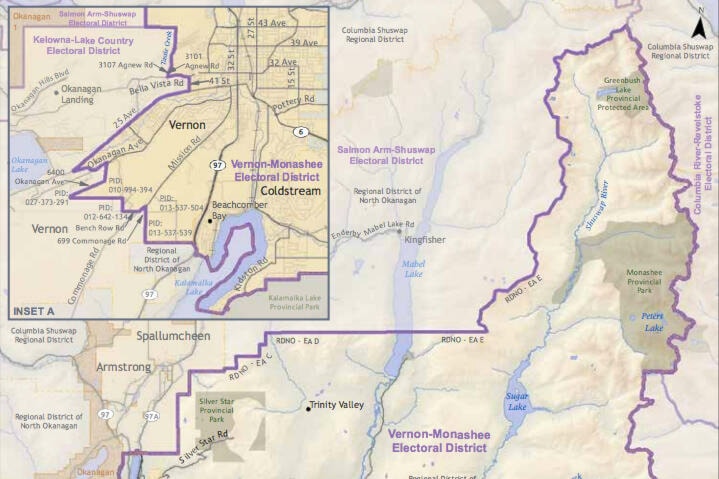By North Okanagan-Shuswap MP Mel Arnold
The House of Commons is comprised of members representing electoral districts, also known as ridings or constituencies, spread across the country, and established by a formula set out in Canada’s Constitution.
Major factors considered in establishing ridings and their boundaries are geography, population and communities of interest.
Canada’s Electoral Boundaries Readjustment Act requires that after each decennial (10 year) census, that provincial commissions review and adjust ridings for changes in population. As such, beginning in 2021, the chief electoral officer began developing formulas to determine how many ridings are to be in each province and territory, and began developing proposals for adjusting boundaries of ridings to attain a relatively equal number of electors in each, reflecting a provincial average number of electors per riding.
In October of 2021, the number of seats per province was announced with British Columbia’s federal representation increasing by one additional seat for a new total of 43. The average population target per electoral district in B.C. was set at 116,300, and the initial proposal for redistribution and adjustment of boundaries in B.C. was released in May of 2022, with deadline of Oct. 3, 2022, for public input on the proposals.
The Commission’s May 2022 proposal included changes to the riding of North Okanagan-Shuswap, including a border separating the City of Vernon into two different ridings to form a new Vernon-Lake Country riding. The proposal also included the addition of a parts of Kamloops, and the communities of Revelstoke and Mica Creek to balance populations at the targeted average.
Read more: MP Mel Arnold: Disincentives require attention to see full potential
Read more: North Okanagan-Shuswap MP looks forward to rebuilding of unity within Conservative party
On Feb. 8, 2023, the Commission issued its report based on public input, and this report is significantly different from the May 2022 proposal in that it proposes significant changes to most ridings in south-eastern B.C. Most ridings in the area would see significant changes in both boundaries and names.
The report’s proposed southern boundary for the North Okanagan-Shuswap would move north to the Armstrong area, while the western boundary would move to downtown Kamloops, and the eastern boundary extended to the Alberta border. Maps of the current, proposed and report boundaries may be viewed online by searching “Federal Boundaries Commission.”
The earliest that any changes to the number of seats or boundaries would take effect is April 2024. If a federal election were to be called prior to the final boundaries being established, the current boundaries and number of seats would apply.
There are a multitude of factors, known and unknown, that will determine outcomes of the redistribution currently underway. That said, I believe boundaries exist for the sake of organization, public administration, and representation, and should not divide citizens or the communities where they reside.
Wherever the riding boundary lines fall in the final Representation Order to be proclaimed at the conclusion of the redistribution process, I look forward to continuing to serve and represent the people I have been elected to represent or may represent in the future.
newsroom@saobserver.net
Like us on Facebook and follow us on Twitter
Sign up for our newsletter to get Salmon Arm stories in your inbox every morning.
